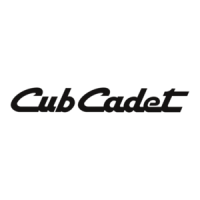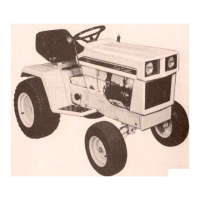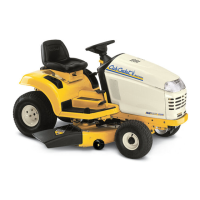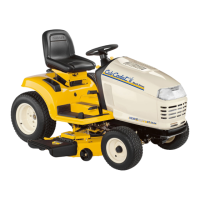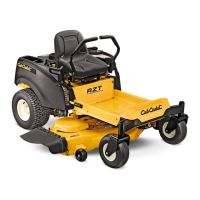ELECTRICAL SYSTEM
109
• Heat and Vibration: Heat and vibration are
hard on most mechanical devices. The same is
true of electronics.
• Moisture: Moisture causes a nasty combination
of corrosion and shorts. Corroded connections
and wires create resistance that results in low
voltage and ground issue. Many electronic com-
ponents are “potted” or encased in a sealant that
protects them from moisture. They are still vul-
nerable to bad inputs caused by corroded exter-
nal connections and damaged switches.
• Improper Tools: Some test lights can over-
load electronic circuits.
Electrical environment: AC Vs. DC
Most modern outdoor power equipment that has an
electrical system complex enough to require diagnosis
will be equipped with an alternator that produces alter-
nating current (AC). In most systems, this current is
immediately rectified to direct current (DC), and regu-
lated to a nominal 12 Volts. The presence of AC is very
limited. The primary concern of this section is 12 Volt
DC systems, though much of the theory and tech-
niques apply equally well to other DC systems.
1. Voltage: Pressure
• Voltage is the “pressure” that electricity has. It is
the amount of force pushing electrons through a
circuit.
• The unit of measurement for this pressure is
volts.
• The capital letter “V” is used to represent volts.
• Most (not all) outdoor power equipment operates
on a nominal 12 volts. In practice, system volt-
age may run as high as 13.5V or 14V.
2. Amperes: Flow
• Current is the “flow” of electricity. It is the amount
of electrons flowing in circuit.
• The flow of current is measured in Amperes or
Amps for short.
• The capital letter “I” is used to represent Amps.
3. Ohms: Resistance
• Resistance is the opposition to current flow. It is
a restriction that slows down the flow of current.
• Resistance is measured in Ohm’s.
• The greek letter omega “
Ω”, or the letter ”R” for
Resistance
is used to represent Ohm’s.
• Resistance creates heat. A circuit with too much
electrical load, or too much resistance for the
load placed on it will get hot.
